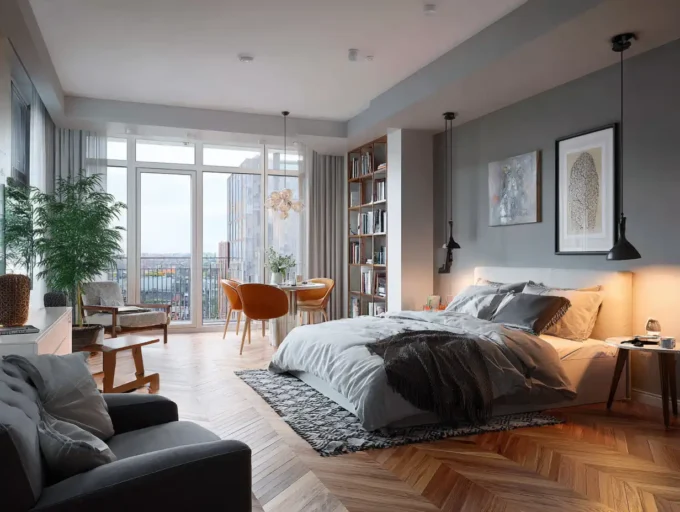We’re living through a quiet revolution in home building, and the rise of prefabricated houses is at the center of it. As land, labor, and lending pressures collide with climate goals, factory-built housing is moving from niche to mainstream. We’ve watched buyers, builders, and policymakers converge on prefab because it promises speed, quality, and greater cost predictability, without giving up design. Here’s how we got here, what prefab really means, and how to navigate the process with confidence.
What Prefabricated Houses Are—And Why They’re Surging
Prefab Vs. Manufactured Vs. Modular: Key Definitions
When we say “prefab,” we’re talking about any home with major components built off-site and assembled on the property. Within that umbrella:
- Modular homes are fabricated as volumetric modules in a factory, then transported and set on a permanent foundation. They’re built to the same local building codes as site-built homes.
- Manufactured homes (HUD-code) are built to a federal standard established in 1976 and transported on a chassis. They can be installed on leased land or private property and can be titled as real property when permanently affixed.
- Panelized systems ship flat sections, walls, floors, roofs, that a crew assembles on-site. Think of it as high-precision framing delivered to your lot.
Each path has distinct code, financing, and appraisal implications.

A Brief History And The Recent Inflection Point
Prefab isn’t new. Sears sold kit homes a century ago: postwar America leaned on prefabrication to meet demand. The recent inflection point comes from better digital design tools, tighter labor markets, and consumer expectations shaped by ecommerce. Factories now use CNC cutting, laser layout, and rigorous QC to deliver repeatable results. Meanwhile, cities and states are updating codes and incentives to bring higher-quality prefab into the housing mix.
Cost, Speed, And Sustainability: Core Drivers
We’re seeing three drivers behind the rise of prefabricated houses:
- Cost control: Factories buy materials in bulk and reduce waste. While total budgets still swing with finishes and site work, prefab can trim unpredictability.
- Speed: Weatherproofing and framing happen off-site while site prep runs in parallel, cutting months off schedules.
- Sustainability: Tight envelopes, less waste, and opportunities for all-electric, solar-ready designs make prefab a practical climate strategy.
The Main Prefab Approaches
Modular Boxes
Volumetric modules arrive 70–90% complete, mechanicals, cabinets, even tile. After craning onto a permanent foundation, crews stitch modules together, seal the envelope, and complete finishes. Pros: fastest site time, high quality control. Watch-outs: transport width limits, crane access, and seams that require skilled finishing.

Panelized Systems
With panelized homes, factories cut and insulate wall and roof panels to millimeter precision. On-site crews assemble them like a giant puzzle, then complete MEP trades and finishes. Pros: flexible design and easier logistics: panels fit tight sites. Consider: more work happens on-site than with modular, so schedule certainty depends on your builder.
Manufactured (HUD-Code) Homes
These are built to a national HUD code, shipped on a steel frame, and can be very cost-efficient. Today’s models offer real curb appeal, energy-efficient packages, and multi-section designs. Financing, titling, and siting rules vary, so we plan early with local officials and lenders.
Kit And Hybrid Models
Kits range from shell packages to full structural systems, often favored by experienced builders or hands-on owners. Hybrids blend modular cores (kitchens/baths) with panelized wings, balancing logistics, customization, and cost.
From Design To Move-In: How The Process Works
Site Prep, Permitting, And Foundation
We start with site due diligence: surveys, geotech if needed, utility availability, driveway and crane access, and zoning checks. Permitting runs in parallel with factory engineering. Foundations, crawl, slab, or basement, must meet the manufacturer’s specs and local code. A solid foundation plan avoids costly rework.

Off-Site Fabrication And Quality Control
In the factory, jigs, climate control, and standardized workflows reduce errors. Third-party inspections and in-line testing (blower-door targets, moisture checks, electrical verification) catch issues before shipping. The result: consistent assemblies that arrive ready to install.
Transport, Set, And Final Connections
Modules or panels ship on scheduled carriers. On set day, we coordinate cranes, traffic control, and weather windows. After placement, crews complete structural ties, air sealing, roofing, and exterior cladding transitions. Final steps include utility hookups, interior seam finishing, and inspections for certificate of occupancy.
Budget, Financing, And Total Cost Of Ownership
Price Per Square Foot, What’s Included (And What’s Not)
Price per square foot is a starting point, not the whole story. Factory quotes typically include structure, standard finishes, and some fixtures. Site costs, foundation, utilities, septic, driveway, craning, permits, and local contractor labor, sit outside that number. We insist on an itemized scope so surprises don’t derail the build.

Financing, Appraisals, And Insurance For Prefab
- Modular and panelized homes are appraised as site-built once on a permanent foundation: traditional construction loans work well.
- Manufactured homes may qualify for specialized programs (e.g., MH Advantage, CHOICEHome) when installed to specific standards and titled as real property.
- Insurers focus on final code compliance and location risks: premium differences are more about site and materials than the prefab method.
Energy, Maintenance, And Resale Considerations
Factory precision often means tighter envelopes and lower utility bills. Maintenance mirrors site-built homes: availability of replacement components is typically better thanks to standardized SKUs. Resale value tracks local comps and quality, modular and panelized homes generally perform like their site-built neighbors when the design and finishes align with the market.
Hurdles, Myths, And How To Mitigate Them
Zoning, Codes, And Inspection Nuances
We still run into legacy perceptions. The fix is paperwork and planning: confirm whether your jurisdiction treats modular as site-built, verify manufactured-home placement rules, and clarify who inspects what (state, third-party, or local). Early meetings with building officials smooth the path.

Design Limits And Customization Paths
“Prefab means cookie-cutter” is outdated. Yes, transport dimensions set module widths, but smart designers compose modules and panels into striking forms. We prioritize choices that matter, kitchens, glazing, exterior materials, and keep structural grids efficient to control cost.
Logistics, Lead Times, And Builder Coordination
Factory slots book up. We lock a production window only after final drawings and deposits. A capable GC coordinates foundation timing, crane day, and follow-on trades so the schedule doesn’t slip. Contingency plans for weather, road closures, or oversized-load escorts save headaches.
The Road Ahead: Policy, Technology, And Market Outlook
Building Codes And Incentives On The Horizon
States are updating energy codes and simplifying approvals for off-site construction. Expect more express permits for factory-reviewed components and incentives for all-electric, solar-ready homes. Accessory dwelling unit (ADU) reforms are also fueling demand.

Digital Design, DfMA, And Automation
Configurable design tools, BIM, and Design for Manufacture and Assembly (DfMA) are making homes easier to customize without blowing budgets. Automation, CNC, robotics, and automated nailing/insulation lines, improves precision and throughput while supporting skilled labor, not replacing it.
Prefab’s Role In Addressing The Housing Shortage
We won’t solve the housing gap with one tool, but prefab is a powerful lever. Faster cycle times mean more homes per year with the same workforce. Standardized components enable infill, ADUs, and small-lot strategies. And predictable costs help lenders and municipalities greenlight projects that used to stall.
Conclusion
The rise of prefabricated houses isn’t hype, it’s a practical response to cost pressures, climate goals, and a shortage of skilled labor. If we plan the site thoroughly, lock designs early, and partner with an experienced factory and GC, we can deliver a home that’s faster, tighter, and easier to live in. The next move is simple: define your scope, meet your local officials, and get on a factory’s calendar before the best production windows fill up.
- affordable housing solutions
- benefits of prefab houses
- cost of prefab homes
- custom prefab house designs
- design and build prefab
- eco-friendly prefab homes
- energy-efficient prefab homes
- factory-built homes
- future of housing
- modern prefab housing
- modular homes
- Prefab Homes
- prefab housing trends
- prefabricated construction
- prefabricated home builders
- Prefabricated Houses
- prefabricated housing market
- quick assembly homes
- smart home prefab
- sustainable factory-built housing
















Leave a comment